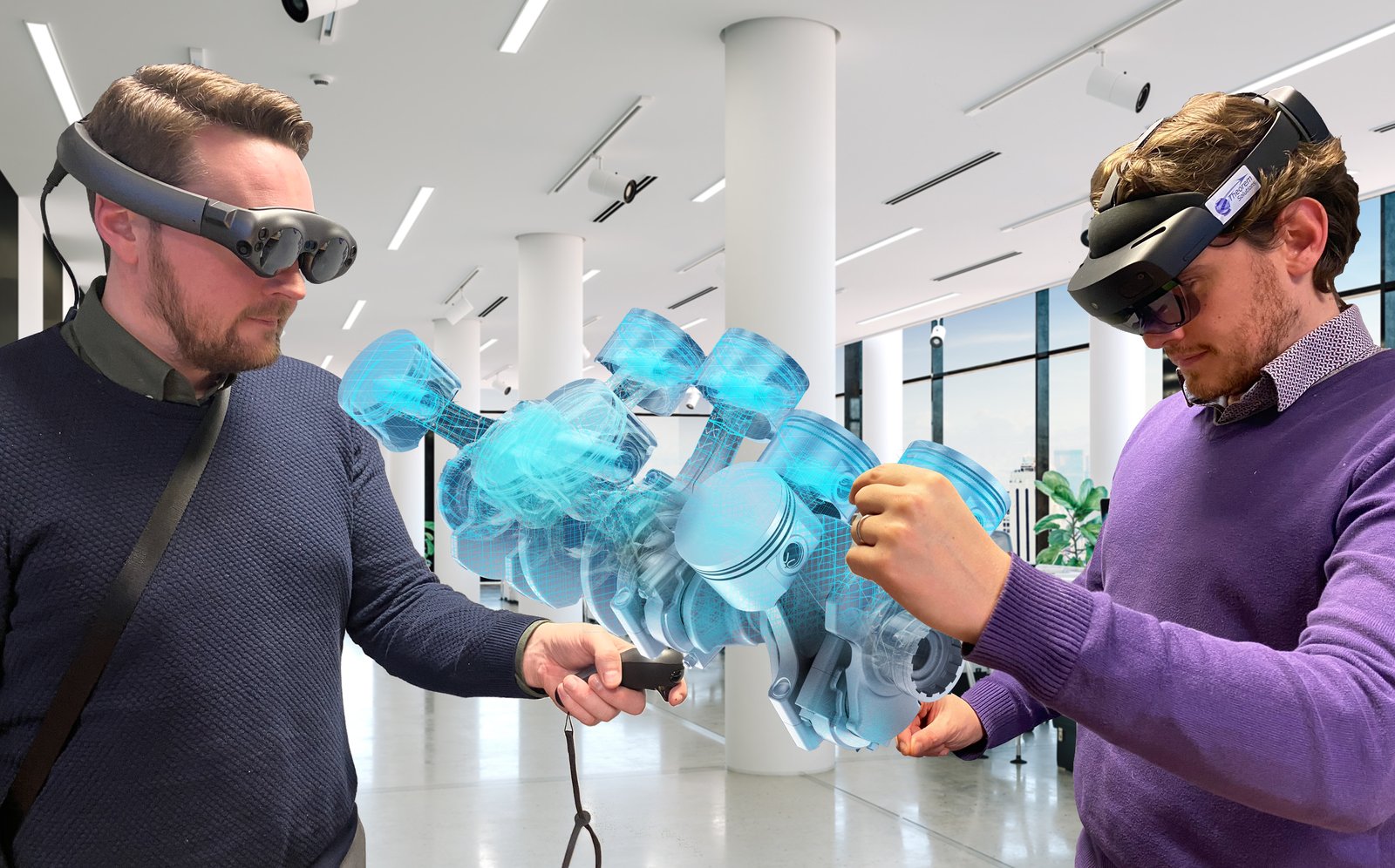There was a significant rise in the recognition and adoption of using XR technologies (Augmented, Mixed and Virtual Reality) in the engineering and manufacturing industries during 2019. Organisations are beginning to realise the potential of using these technologies to replace existing processes for a wide range of use cases.
Augmented (AR) and Virtual Reality (VR) are more established within certain areas of engineering, with them already being used for Design Review, Factory Layout and Training use cases, amongst others.
But it is Mixed Reality (MR) that could make the most noise in 2020. According to a recent Research and Markets report, the global MR market is estimated to reach US$3.68 billion by 2025.
Although sometimes still referenced as AR by some, MR is a standalone ‘reality’ in its own right and has the capability to change the way we interact with 3D CAD data, complementing it as it enables users to view 3D CAD data at full scale, and in context.
What sets MR apart from AR is that MR content is in the form of a hologram within the actual real-world environment, an approach that eliminates the constraints of conventional 2D visualizations.
MR devices tend to take the form of a hands-free headset, that unlike VR headsets, are not tethered to a desktop, allowing complete freedom of movement. This gives users more flexibility in where they can be used, whether in an office, on the factory floor, or in the actual field of work.
With MR headsets, designers can use hand gestures and voice commands to manipulate and interact with their 3D CAD models as if they were real objects, walking around and looking inside the data. In addition, MR allows users to see the real world alongside virtual objects anchored to a defined point, helping users to treat them as real objects. It combines the real world and digital text, 3D graphics, sound and video, and enables you to see your physical environment and digital content at the same time.
In terms of MR devices, Microsoft have been at the forefront of the market with their HoloLens headset, and have now started shipping the HoloLens 2, which is targeting the enterprise user rather than a consumer audience. But 2020 is seeing a number of other devices looking to challenge Microsoft’s dominance.
Magic Leap is launching an Enterprise Suite that includes a Magic Leap 1 headset (an update to the One Creator Edition) as well as two years for dedicated support, device management tools, fast device replacements and extended warranties.
Magic Leap are aiming to move away from being categorised as a consumer device, and repositioning itself as an industry ready device provider, with a range of applications, such as learning and assistance, 3D visualization, communication, collaboration and “copresence,” and location-based services, putting it in closer competition with Microsoft’s HoloLens 2 release.
Lenovo is also launching an MR headset- the ThinkReality A6, a “heads-up, hands free” mobile visor designed specifically for the enterprise, in particular industrial workers and field technicians, enabling them to receive remote assistance, reducing repair times and eliminating errors as well as improving training quality and offering new ways to collaborate.
But it’s not just about the hardware. It’s about the software as well, how you use your 3D CAD and PLM data in the MR device. Theorem has created a range of use-case based experiences- our XR suite; for manufacturing and design related tasks such as Immersive Visualization, Factory Layout, Design Review and Guides for delivery of work instructions and training. This is particularly useful for training new staff members in complex process or away from hazardous work environments. These are powered by the Visualization Pipeline, a server based technology, which gets your 3D CAD data into MR devices, as well as AR and VR devices.
Theorem’s XR suite is device neutral and enables you to work on the same project across any type of XR device. You can use VR for one aspect of a task, and then switch to a MR device to complete the task, or place your CAD model in its real world context. This also enables Theorem’s customers to seamlessly migrate their VR processes to MR, to take advantage of their new hardware.
Using MR (and AR and VR) to collaborate with other people across the world is saving organisations time and money as it takes away the need to have people physically in the same place.
With an additional collaboration module to complement Theorem’s XR experiences, the spatial context can be applied to the demonstration of a new idea to a colleague, or it can enable complete teams to come together to address a problem that would be tough to explain out-of-context. With MR, teams in the same room will see each other through their devices. However, using any XR technology, distributed team members can also be ‘present’ in the room, represented by a virtual avatar that moves as they do, and mimics their gestures; it’s as close as currently possible to having them physically present in the room.
The modern workplace is changing; today's products are rarely developed in the same location, and globally distributed design is practically unavoidable. The need for collaborative work and creative group ideation continues to grow and MR represents a significant advance toward the provision of true spatial context for the user, aiming to place full-sized, 3D digital data into the physical world.
The number of MR devices set to be released in the coming couple of years prove that it’s not a fad, and that the tech giants are taking the application of Mixed Reality- especially in the enterprise world- seriously.
This post has recently been published on MCADCafe



